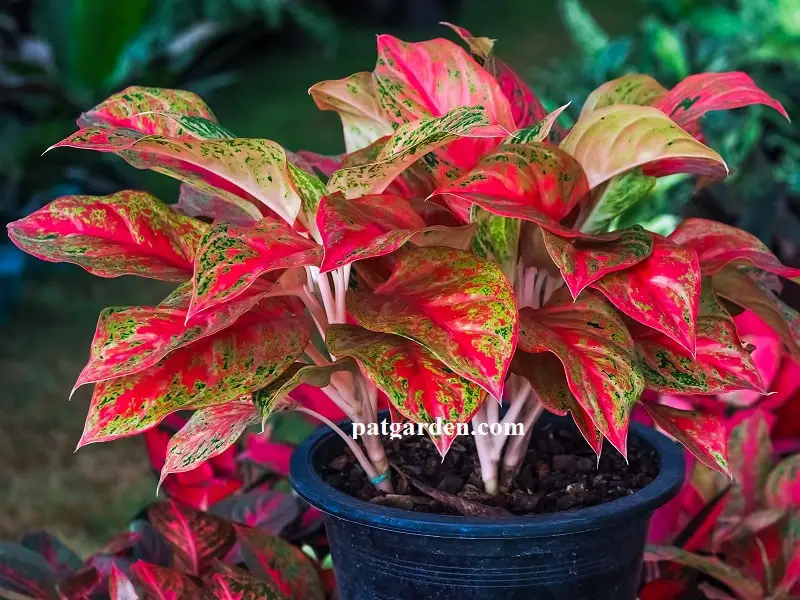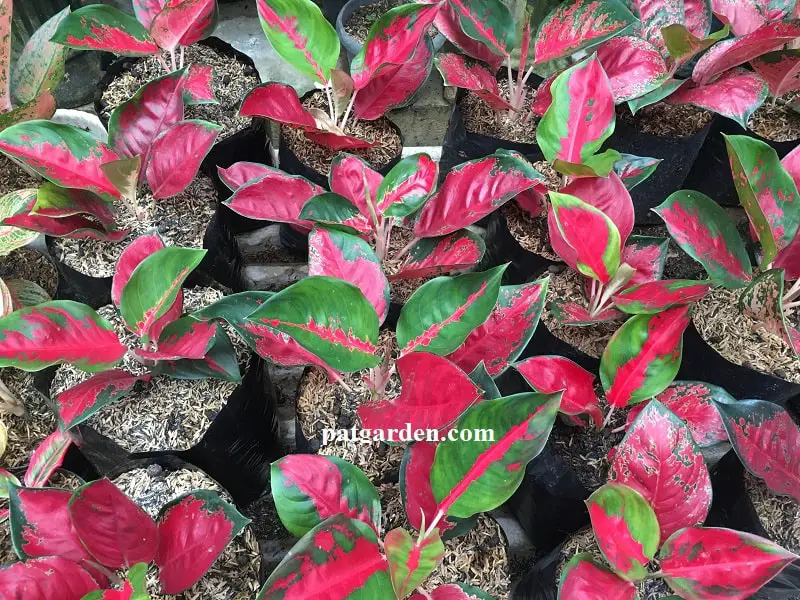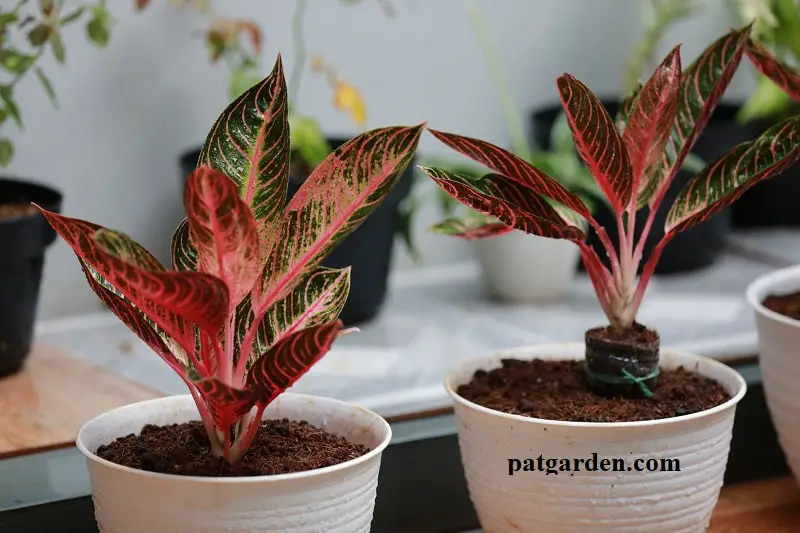The aglaonema (Chinese evergreen) is yet another popular houseplant. The indoor plant thrives under low light and sporadic care.
One of the most incredible things is that it is a perfect option for beginners. But the houseplant is also attractive for more experienced growers.
Besides that, the ongoing maintenance of the decorative foliage houseplant is simple and easy. The plant grows slowly and takes a lot of time to overcome the growing basket.
One of my favorite features is that the plant is versatile and adaptable to any indoor environmental condition. It is also less afflicted by pests and diseases.
But this does not imply that the Chinese evergreen plant is resistant to some complications. Aglaonema experience yellowing, browning, and curling of leaves in their lifetime.
So, why are the leaves of my aglaonema limp and drooping? The common causes are dry soil, water stress, low humidity, temperature changes, fertilizer, pests, and diseases.
The limping and drooping signs can be alarming. But there is no need to freak since most of these causes can easily be fixed. Keep reading the article to find out more:
You May Also Like: Chinese Evergreen Plant Care Guide

Causes of Chinese Evergreen Leaves Limping and Drooping
These causes include:
Extremely Dry Soil
The houseplant flourishes in relatively moist soil. Dry soil usually occurs if the grower has gone on a vacation for a longer period.
Failure to follow the watering schedule renders the soil extremely dry. Thus, making the leaves of the houseplant to start wilting or drooping.
The condition can kill the plant if left unattended. But soaking the soil with optimal water might help to revive the plant.
Always have the habit of checking the topsoil level of dryness before watering. This is one of the utmost aglaonema plant care routines to consider.
Watering Stress
Most houseplants are damaged either by overwatering or under-watering. The red aglaonema plant needs a moderate amount of water to survive indoors.
Overwatering makes the roots of the pink or red aglaonema experience root rot. The plant finds it difficult to get enough oxygen and water to support an upright posture. Thus, the leaves start to limp and droop.
On the other hand, under-watering results in an insufficient water supply to the plant. The soil in the pot becomes dry and this fosters wilting of the plant.
It is good to determine the amount of water the plant needs. The idea will help to fix all the issues related to water stress.
Environmental Temperature Changes
Drooping leaves of red aglaonema could be due to both cold and heat. Hot temperature drains moisture from the leaves faster than the rate of water absorption by the roots.
Also, cold temperatures weaken the cell wall in the leaves that provide extra support. The effect results in leaves limping and drooping.
Keeping the plant in an environment that has about 18oC (64oF) will foster better growth. Ensure the location receive filtered light rather than direct sunlight.
You May Also Enjoy: Why Are My Aglaonema Leaves Turning Yellow?
Too Much Feeding
The Chinese evergreen plant is a heavy feeder. The soil needs to be supplied with correct nutrients and minerals to spearhead better growth.
But the fertilizer should be sourced from a reputable brand meant for houseplants. Some fertilizers increase the accumulation of salt in the soil.
The excessive buildup of salt draws water from the plant due to osmotic imbalances. Thus, making the plant dehydrate and this results in leaves drooping.
We recommend using all-purpose fertilizers and stick to the directions highlighted on the package. The procedures will help to avoid overfeeding the plant and increasing salt buildup in the soil.

Fungus and Bacterial Infection
Most houseplants do not thrive in waterlogs or soggy soils. Aglaonema plant is not an exception though it is resistant to some common indoor plant diseases.
Soggy soil creates a breeding ground for fungus and bacteria. Root rot is caused by fungus and bacterial infection by insect infestations.
Root rot inhibits the plant from the absorption of water and minerals to facilitate healthy growth. Bacterial infection on the leaves and stem make the plant to begin to rot from nowhere.
These infections happen to be the reason behind the leaves limping and drooping. These are usually the initial signs of the diseases.
Make sure the soil is well-drained and the pot has tiny holes at the bottom. The function of the holes is to drain out excess water and well-drained soil is to prevent waterlogging.
Pests Infestations
Some of the common pests destroying Chinese evergreen plants are insects and rodents. These creatures damage the leaves and root system of the plant causing limping or drooping symptoms.
Insects like mites and aphids suck the cell sap of the leaves which later result in limping. These insects also inject the plant with some poison venom that makes the plant weak.
Use insecticide soap and spray the solution on the upper and lower part of the leaves. This should be done for seven days continuously to kill the insects.
Rodents are known for damaging the root system of the houseplant. The issue makes the plant unable to absorb water and supply it to various vital tissues.
Low Humidity
Red aglaonema flourishes in tropical and subtropical environments of Asia. It implies that the plant prefers high humidity to experience faster growth.
But the houseplant can still survive in an area with low humidity. If the house experience hot air, the plant leaves will start to droop or limp.
The dry condition in the indoor space will cause stunted growth and even facilitate the wilting process. The dehydration occurs due to a high level of transpiration triggered by hot air in the surrounding.
You May Also Enjoy: 20 Stunning Aglaonema Varieties (With Pictures)
Repotting
Aglaonema plants usually take time to grow and overcome the pot. It is the reason behind the limited frequency of repotting the houseplant.
Keep in mind that the repotting process usually interferes with the root system of the plant. The process makes the indoor plant experience leaves drooping for a few days.
The problem occurs since the plant is unable to take up water and minerals. But once the roots become active, then the issue related to leaves limping is resolved.

In Conclusion
Healthy Chinese evergreen plant leaves are vibrant and colorful. The plant is ideal for modern living rooms, offices, and dim bedrooms.
The tolerance to moist and dry conditions happens to be the reason behind their popularity in many homes. It is a perfect choice for both beginners and experienced growers.
Proper care and maintenance will help to curb aglaonema plant leaves from drooping or limping. We hope the in-depth guide will help you create measures to prevent the Chinese evergreen plant from experiencing problems.
You Can Also Read: How to Care for Anthurium Plants
Let me try the tips. My Chinese evergreen plant have been drooping leaves two days after repotting. Thanks for the insights
I would say Chinese evergreen plant is delicate to handle for beginners. But getting to know the problems and learning to fix them could make it a success. Otherwise, thanks for the info.